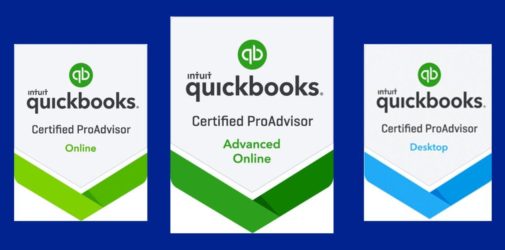Creating Contractor Records


Working with Contractors



All your Quick Book Needs






If you purchase several items and services away from the office, QuickBooks Online can help you record them while you’re out and about.











You can save time by using QuickBooks Online’s Batch Actions tool.


QuickBooks Online is more than just an online bookkeeper. It can help improve your cash flow, your customer relationships, your inventory readiness, and your future
If you’re already using QuickBooks Online, you know how much impact its bookkeeping abilities have had on your company’s accounting operations. You’re saving time, which in-turn saves money, and you’re reducing errors. When a customer or vendor calls with a question, or you yourself need to track down a critical detail to solve a problem, you’re able to find solutions quickly.
You may already have learned, though, that QuickBooks Online’s benefits include much more than simply getting the numbers right. When you take advantage of all it can offer, you’re likely to notice more far-reaching effects.
The Specific
Let’s look at how QuickBooks Online accomplishes all of this. You can do much of it on your own, but we’re trained to help small businesses get the most out of QuickBooks Online. We can help you maximize the effectiveness of your accounting time so your company can:
Better balance between income and expenses.

QuickBooks Online provides quick, real-time overviews of your sales status.
You can’t begin to improve your company’s cash flow until you understand where the financial bottlenecks are. QuickBooks Online provides that information for both income and expenses in a variety of ways. In the image above, you can see that there are seven past-due invoices. Click on the orange bar to see a list of them, and you can automatically send reminders. QuickBooks Online also automates the process of sending statements.
You can also run accounts receivable and accounts payable reports that will show where you stand with customers and vendors, like Open Invoices, Uninvoiced Time, Unpaid Bills, and Accounts Payable Aging Detail. If you determine that one of your consistent problems with cash flow is late customer payments, you can set up a merchant account through QuickBooks Online to support credit card payments and bank transfers.
More repeat business because of improved customer interaction.
Your customers are like gold. To build the best relationships possible with them, you need a clear, updated picture of their transactions, their payment details and history, and your interaction with them. QuickBooks Online provides templates for Customer Information records that provide all of that, along with their contact information and a real-time update of the status of their invoices and payments, estimates, time activities, etc. The latter is provided in the form of an interactive list with links to immediate actions you can take.
A more stable, profitable inventory of products.
If your business sells products, you know that you have to be smart about inventory levels. Stock too much and you have too much money tied up unnecessarily. Too little, and you’ll be turning customers away and possibly losing their future business. QuickBooks Online’s inventory-tracking tools help you achieve and maintain that balance, so you know both when and how much to reorder.

It’s easy to evaluate your inventory status very quickly in QuickBooks Online.
QuickBooks Online also offers multiple inventory reports, like Inventory Valuation Detail, Physical Inventory Worksheet, and Sales by Product/Service Detail.
Readiness for growth.
You may never want to acquire another company, or move into more spacious offices, or employ dozens of individuals. However, it’s not often that a company doesn’t want to be in a position to grow. And you never know when an opportunity will present itself that would require additional capital. Would you be ready?
If you’ve never applied for a business loan or tried to attract investors, you don’t know how much financial information you’ll need to provide, or in what format. There are very specific reports your potential lenders or investors will want to see, standard financial statements. QuickBooks Online includes templates for these, which include a Balance Sheet, Profit and Loss, and Statement of Cash Flows.
Like the reports we mentioned earlier, they’re easy to generate on the site, thanks to intelligent, customizable templates. Analyzing them, though, and making sure they’re ready to be seen by third-parties takes professional expertise. We can provide that for you. We can also help you better understand and use other elements of QuickBooks Online so that you’re taking advantage of all of its benefits. Contact us soon to set up an initial consultation.
If your business relies on invoices to get paid, there may be times when you need to create and send statements.
You enter into an informal contract with a customer when you send an invoice. You expect that you will receive payment in a timely fashion for goods or services you’ve sold.
That probably works most of the time. But what happens when it doesn’t, when you’ve sent a reminder and are still waiting? And what do you do when a customer orders frequently and is confused about what’s been paid and what hasn’t?
If you’re using QuickBooks Online, you can easily send a statement, a list of sales transactions, credits, and payments. There are three kinds of these:
Balance Forward statements cover a period of transactions that you define.
There are three way to create statements. You can:
Before you create your first statement, though, make sure QuickBooks Online is set up the way you want it to be. Click the gear icon in the upper right of the screen and select Your Company Account and Settings. Click the Sales tab and scroll down to Statements. Click Statements to open the options there.
You can List each transaction as a single line or List each transaction including all detail lines. Click the button in front of the one you prefer. If you want to Show aging table at bottom of statement, click in the box. This will show customers how many days each transaction is overdue.
Click Save when you’re done.
If you’ve already started entering transactions so there’s some data in QuickBooks Online, click the Plus (+) icon in the upper right corner of the screen.
Click Statement, which is located under Other on the far right. Under Statement Type, select Balance Forward. Below that is the Customer Balance Status field. Do you want to see customers with open balances, those who have overdue invoices, or all customers? The third option will include credit memos.
Select a Start Date and End Date. In this example, these were 04/09/2018 and 09/09/2018, and the statement date was 09/10/2018. Click Apply. QuickBooks Online will display a list of matching customers. Click Print or Preview at the bottom of the screen to see your statements.
In this preview, the customer’s balance forward on 04/09/2018 was $8,245.05. A catch-up payment was made on 08/09/2018 and another invoice sent on 09/01/2018, which accounts for the TOTAL DUE at the top.
From this screen, you can either Print the statements or Close to go back to the previous page, where you can Save and Send.
As we stated earlier, there are two other ways to create statements. Click Sales in the left vertical toolbar and highlight the Customers tab by clicking on it. Hover your cursor over a customer and click the down arrow at the very end of that line. From the list that opens, select Create statement.
You can also hand-pick multiple customers to receive statements. With the Customers window open, click in the box in front of your choices, and then click the down arrow next to Batch actions at the top of the list. Select Create statements.
The mechanics of creating statements in QuickBooks are fairly simple. But you don’t want to send an inaccurate one to a customer. Make sure your transactions are up to date before you generate any statements, and choose your date ranges carefully. As always, we’re available to help with this task – or any other area of QuickBooks Online that might be confusing to you. We’re here to help you be pro-active to avoid problems in the long run.

